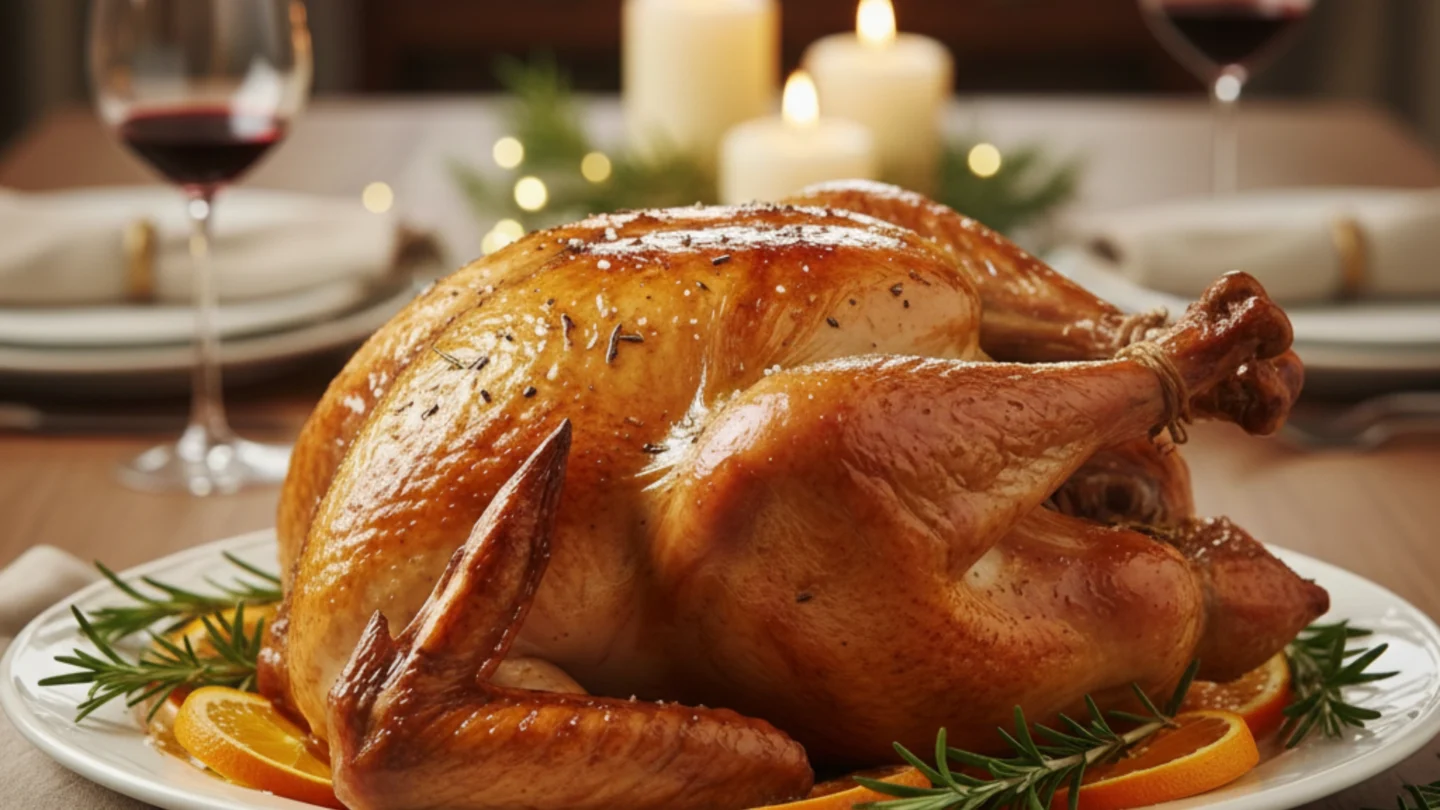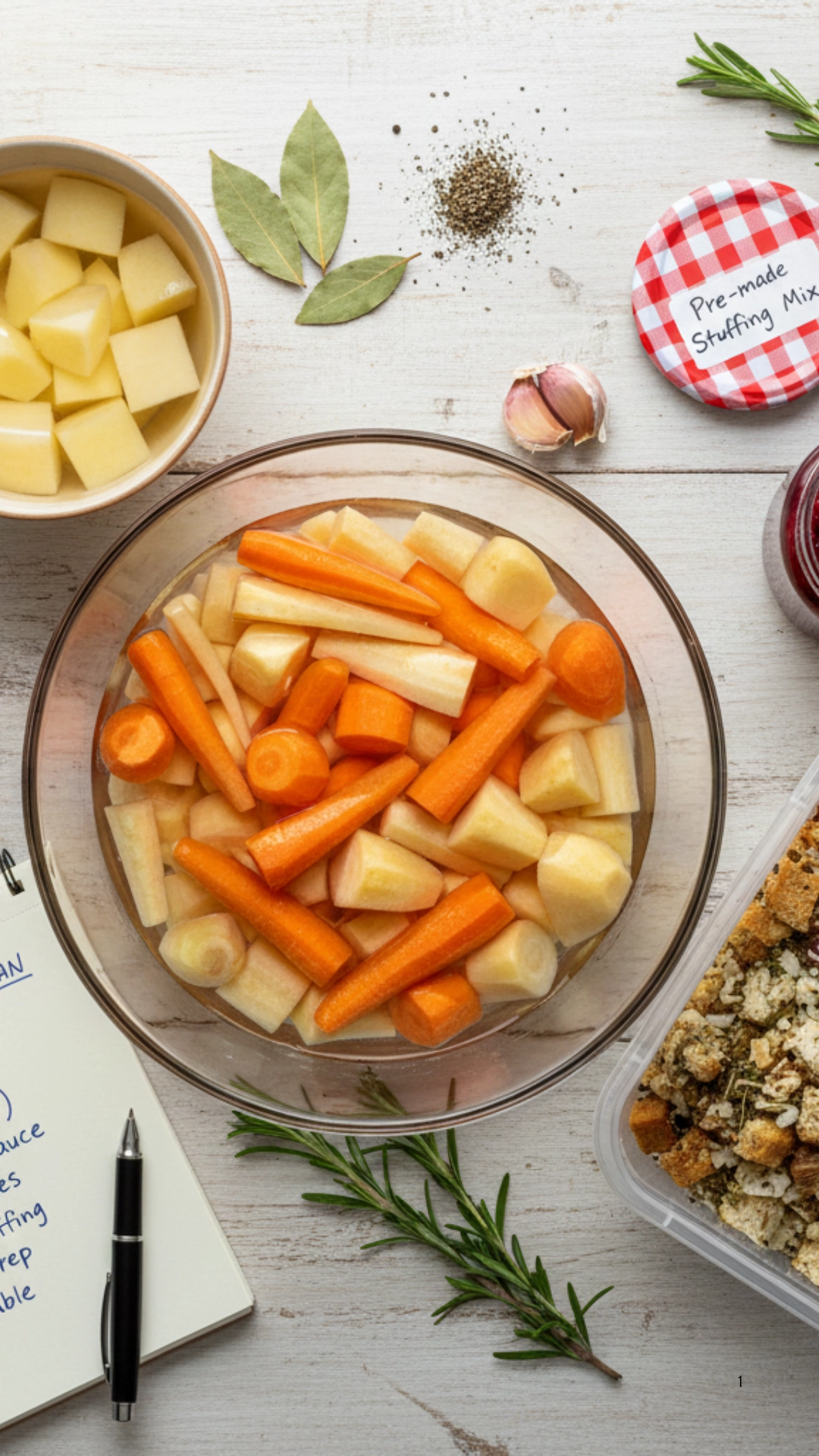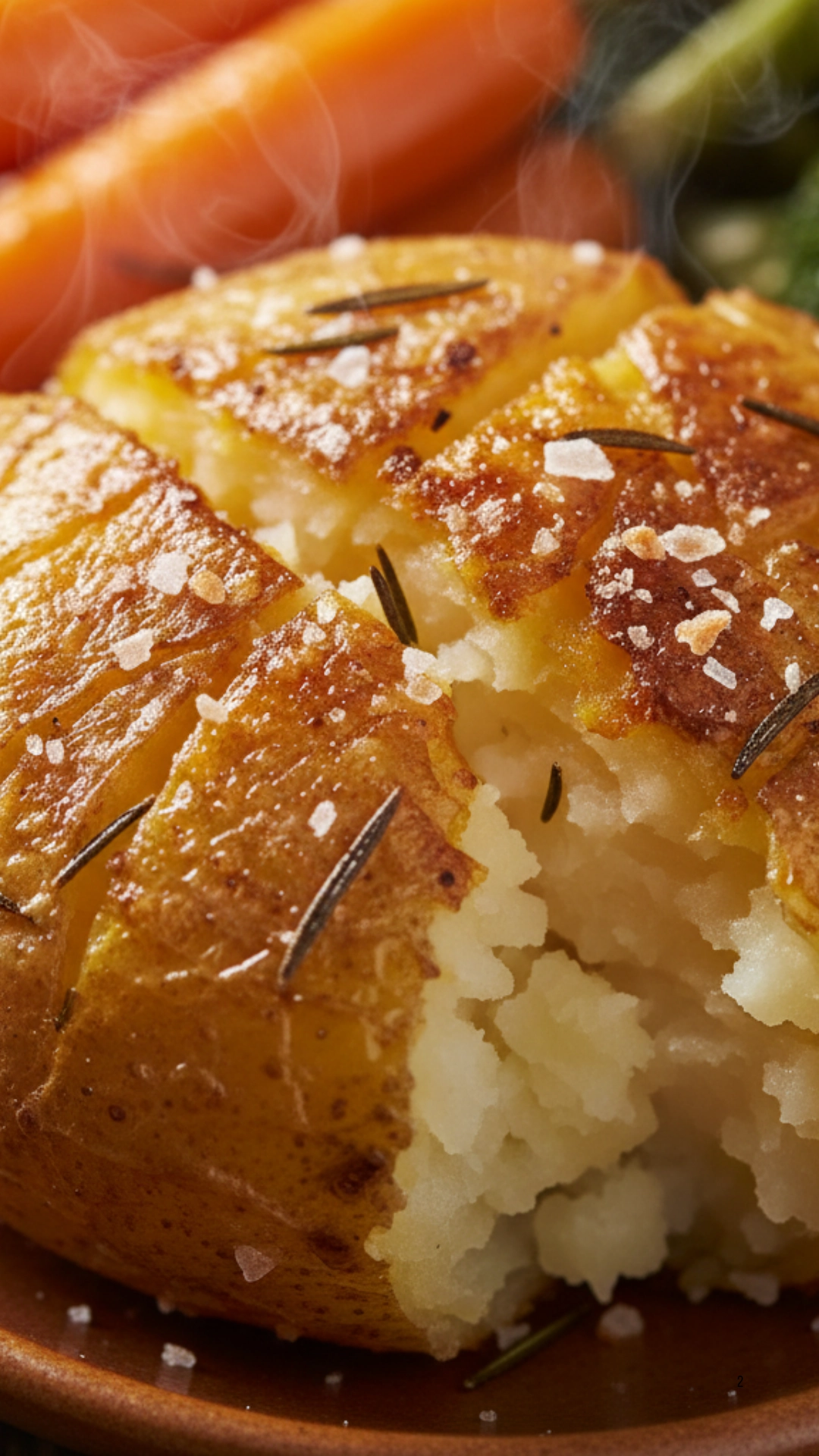This post may contain affiliate links, which means I may receive a small commission should you decide to click that link and make a purchase. For more information please refer to the Terms & Conditions.

I know the feeling when the calendar flips to December. Suddenly, the enormous task of planning the perfect Traditional Christmas Dinner looms large. I’ve been there, staring down a massive grocery list and a tiny oven.
I wondered how I would pull off that magical, multi-course meal! But I’ve learned that a solid plan is the secret. I believe you can absolutely conquer the holiday kitchen and actually enjoy the day. I wanted to share my approach to simplify the entire process for you.
This isn’t just about recipes; it’s a complete, step-by-step strategy. My goal is to make sure your Christmas Dinner is delicious, memorable, and stress-free. Let’s get into it!
Conquering the Traditional Christmas Dinner
You deserve a relaxing Christmas Day. The key to achieving this is intense and thoughtful preparation in the days leading up to the feast. You need to stop thinking of it as a one-day cooking marathon and start seeing it as a week-long project. Your focus should be on creating a smooth schedule that maximizes flavor while minimizing panic.
The Core Components: What You Need
A classic, delicious Traditional Christmas Dinner is built on a few non-negotiables. You should decide on these main elements first, as they will dictate your shopping list and cooking timeline.
- The Main Event: Most people opt for a large roast, such as turkey, ham, or goose. The main protein is your most significant time commitment, so start your planning here.
- Essential Starches: This includes perfectly crispy roast potatoes and creamy mashed potatoes. Don’t forget Yorkshire puddings if your main course is beef!
- The Best Trimmings (Vegetables): Brussels sprouts (maybe with bacon or chestnuts), honey-glazed carrots and parsnips, and perhaps some festive red cabbage.
- The Crucial Condiments: Gravy (rich and flavorful!), Cranberry Sauce (sweet and tart), and a delicious stuffing (inside the bird or baked separately).
- The Sweet Finish: A decadent dessert like Christmas pudding, a Yule log, or a beautiful trifle.
Now that you know what you’re aiming for, let’s break down the process into actionable steps.
Your 5-Day Countdown to Christmas Dinner Success
You cannot do this all on Christmas morning. I’m obsessed with this countdown method; it’s what saves my sanity every year.
Five Days Before (D-5: The Prep-Ahead Phase)

This is where you make things that actually taste better when they sit for a few days. You are building a flavor foundation.
- Start the Gravy Base: Don’t wait until the last minute to make gravy from scratch. You should make a rich stock now. Roast turkey wings, onions, carrots, and celery until they are deeply browned. Cover them with water and simmer for hours. Strain the liquid and either freeze it or store it in the refrigerator. You will reduce this later with the roasting pan juices for the final, incredible gravy.
- Make the Cranberry Sauce: Homemade cranberry sauce is super simple and keeps well in the fridge. You should cook the cranberries with sugar, orange zest, and a splash of water or juice. Making it now means one less thing on Christmas Eve.
- Prepare the Stuffing: Most stuffings, especially bread-based or sausage-based ones, can be prepared and even partially baked halfway through now. You should assemble it fully, cover it tightly, and keep it chilled. You can finish baking it on Christmas Day.
- Shop for Non-Perishables: Stock up on all your pantry essentials now. I’m talking about spices, flour, sugar, alcohol for the pudding, drinks, and all the things that don’t need to be fresh. You will thank yourself later for avoiding the holiday crowds.
Three Days Before (D-3: The Heavy Lifting)
This is the time for vegetable prep and any final structural steps.
- Peel and Chop Root Vegetables: You can now peel your potatoes, carrots, and parsnips. Store them entirely submerged in cold water in sealed containers in the refrigerator. This prevents them from drying out or browning.
- Make or Thaw Dessert: If you are serving a Traditional Christmas Pudding, ensure it’s steamed or appropriately thawed. If you are making a cheesecake or chocolate dessert, you can assemble it now. I love how a good chocolate Yule log can be made days in advance.
- Prepare the Main Protein for Brining (if applicable): If you are wet or dry brining your turkey for extra moisture and flavor, begin this process now. Follow your recipe exactly. Brining is a game-changer for a succulent main course.
One Day Before (D-1: The Final Countdown)
This is the most critical day. You should aim to do everything humanly possible now so you can wake up relaxed.
- Tackle the Side Dishes: Prepare any cold sides, such as salads or relish. You can assemble things like green bean casserole or cauliflower cheese in their baking dishes, cover them, and refrigerate.
- Bake the Stuffing (Partial): If you didn’t partially bake the stuffing on Day 5, do that now. Or, bring it out of the fridge a few hours before the main baking starts to let it come to room temperature.
- The Turkey Prep: You must take your main protein out to start coming up to room temperature if it’s brined or ready to go. Stuff the central cavity just before cooking, not the night before, for food safety reasons. You should rub the skin with butter and seasoning now.
- Set the Table: This is the easiest way to feel ahead of the game. You should set the table completely, including all serving dishes, glasses, and cutlery. This will free up a considerable amount of time on the big day. I often put little sticky notes on the serving dishes, indicating which food goes in each one. I love this organizational tip.
Christmas Day: A Step-by-Step Cooking Timeline
The secret to a perfect Traditional Christmas Dinner is a solid timeline. You will need to tailor this to the size of your roast and your specific oven, but the structure remains the same. Assume you want to serve dinner at 4:00 PM.
Morning (8:00 AM – 12:00 PM): The Roast Starts
- 8:00 AM: Start the Main Roast. You must get your turkey, ham, or goose into the oven early. A 12-14 lb turkey can take 3.5 to 4 hours. Start with the most oversized item first. This is crucial for success.
- 10:00 AM: Start roasting the potatoes. You need to parboil and rough up your potatoes to get those fantastic crispy edges. You should let them cool slightly, toss them in hot goose fat or oil, and get them roasting. They need about 2 hours total.
- 11:00 AM: Start the Gravy Reduction. You should take your pre-made stock and begin to reduce it on the stovetop. This intensifies the flavor while the roast cooks. You want it rich and thick.
Afternoon (12:00 PM – 3:30 PM): Sides and Resting
- 12:00 PM: Get the Stuffing and Casseroles Baking. Place your prepared stuffing, green bean casserole, or cheesy potato dishes in the oven alongside the roast. They often require lower temperatures, so be sure to check your recipes.
- 1:30 PM: Check the Main Roast Temperature. You must use a meat thermometer. The turkey breast should be cooked to an internal temperature of 165°F, and the thighs to 175°F. Remove the bird from the oven when it’s about 10°F below the target, as it will continue cooking while it rests.
- 1:45 PM: The Main Roast Rests. This is the most critical step you cannot skip. Remove the roast, tent it loosely with foil, and let it rest for at least 45 minutes to a maximum of 1 hour and 15 minutes. I’m telling you, this rest makes the meat incredibly juicy.
- Crucial Tip: While the roast is resting, you can turn the oven up high for your roast potatoes and Yorkshire puddings. Use the resting time strategically.
- 2:30 PM: Finish the Potatoes and Yorkshire Puddings. You should increase the oven temperature to its highest setting (around 425°F to 450°F). The potatoes should be returned to the oven for a final crisping, and the Yorkshire puddings (if using) must be placed in screaming-hot fat for about 15-20 minutes.
The Final Push (3:30 PM – 4:00 PM): Heat and Serve

- 3:30 PM: Final Veg Prep. You should sauté your quick-cooking greens, like Brussels sprouts or green beans. You can also reheat the carrots and parsnips with their honey glaze on the stovetop.
- 3:45 PM: Finish the Gravy. You must pour the roasting pan juices into your pre-reduced stock. Thicken it on the stove with a bit of flour or cornstarch slurry until it reaches that beautiful, rich consistency. You want the gravy perfect.
- 3:50 PM: The Great Plate-Up. You should slice the rested meat and arrange it on a large, warmed platter. Bring all the side dishes out of the oven, garnish them, and transfer everything to the serving table.
- 4:00 PM: Dinner is Served! You did it!
Analytical Tips for a Perfect Traditional Christmas Dinner
You need a few extra tricks to master this meal truly. These tips will ensure everything is perfect and warm when it hits the table.
Oven Space Optimization
- Embrace the Rest Time: Use the 45-90 minutes when the turkey is resting to your advantage. This is when you can bake your Yorkshire puddings and blast your roast potatoes and parsnips at a high heat to achieve maximum crispness.
- Use Your Stovetop and Slow Cooker: You must cook some sides, like the braised red cabbage or creamed spinach, entirely on the stovetop. I often keep my mashed potatoes warm and fluffy in a slow cooker set to ‘Keep Warm.’ This frees up vital oven and hob space.
- Roast Potatoes and Turkey Fat: Be sure to drain the rendered fat from the turkey pan. You should use some of that rich, golden fat to roast your potatoes and parsnips—it’s full of flavor.
Flavor and Texture Mastery

- Mashed Potato Perfection: Steam or boil your potatoes until they are fork-tender. You must drain them well and let them air-dry for five minutes before mashing. You should heat your butter and milk/cream before adding them; this keeps the potatoes warm and prevents them from getting gummy.
- Crispy Roast Potatoes: Be sure to give them a good shake after parboiling. The rough edges are what will crisp up in the hot fat. Don’t overcrowd the roasting tray; you should give them space to breathe.
- The Glaze Game: Think beyond plain roasted vegetables. Toss the carrots and parsnips in a mixture of honey and a touch of rosemary for a sweet and earthy glaze. Add the glaze in the last 15-20 minutes of cooking to prevent burning.
Post-Dinner Harmony
- Keep Your Plates Warm: A hot meal on a cold plate is a disappointment. You should stack your dinner plates in a low oven (around 150°F) for the last 30 minutes of cooking. This small step makes a huge difference in the dining experience.
- Dessert Ease: Serve the traditional Christmas Pudding with a simple, luxurious brandy butter or a homemade custard. You can prepare these ahead of time and warm the custard on the stove.
- Leftover Strategy: Have foil and containers ready right after dinner. You can assemble simple leftover sandwiches or portion out the remaining meat and sides for easy meals on Boxing Day. You will be so grateful for this later.
Wrapping Up Your Traditional Christmas Dinner Journey
You have everything you need now to create an incredible feast. I know how stressful the holiday can be. By breaking down the process, you eliminate the single-day pressure that usually ruins the holiday for the cook.
I genuinely believe that planning is the secret ingredient for a truly successful Traditional Christmas Dinner. You can be a calm and happy host, enjoying the celebration.
You won’t be a frantic cook stuck in the kitchen! I hope this helps inspire you to try this approach yourself. I can’t wait to hear how wonderfully yours turns out!
